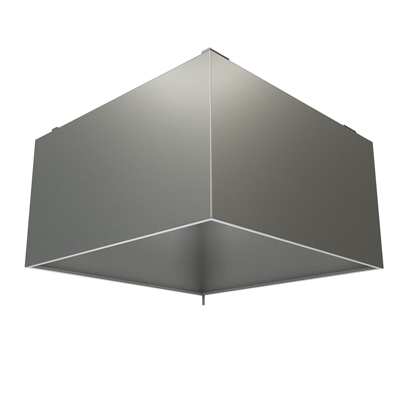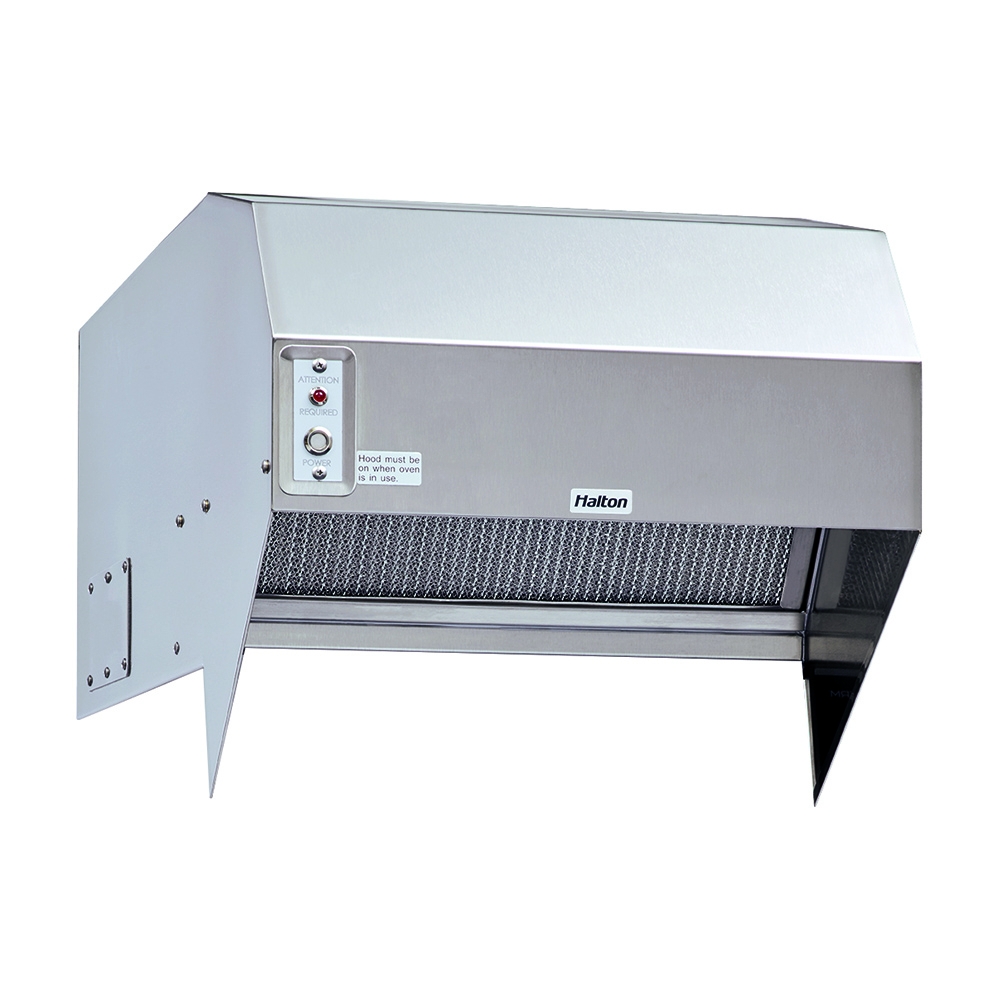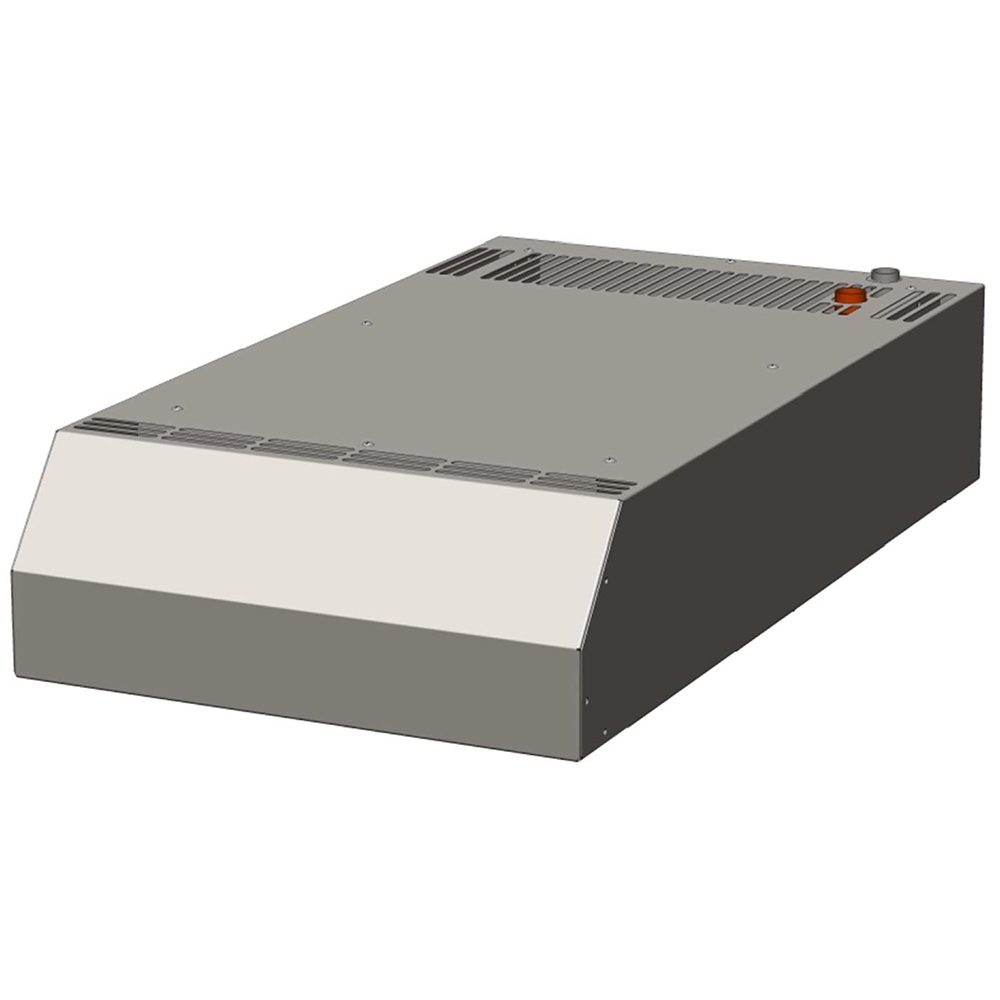Dishwasher hoods are commercial restaurant equipment designed to remove the steam and heat created by commercial dishwashers. Dishwasher hoods are especially essential for high-temperature dishwashers since they produce so much steam, and when there is no hood, it releases into the room when the door is opened. The steam and heat will turn your kitchen into a sauna if you don’t use a dishwasher hood, and the moisture build-up can impact the ceiling and furnishings of your kitchen.
Does a Commercial Dishwasher Require a Hood?

Commercial dishwashers mostly need a hood, but it may depend on the dishwasher type and a few other points. For instance, a commercial undercounter dishwasher will not require a dishwasher hood, while a door-type dishwasher will since it is a high-capacity unit that will produce a large amount of steam.
Considering the size of your kitchen, if the room that the dishwasher is in has a high ceiling and sufficient ventilation, a dishwasher hood will not be necessary. But if you have a small room with low ceilings, installing a hood or purchasing a vent dishwasher will be effective; otherwise, the steam and heat will make the environment temperatures hard to work and uncomfortable.
When it comes to the code requirements, it says that all commercial dishwashers should use a dishwasher hood (type II), except a commercial undercounter dishwasher. But you don’t have to install a dishwasher hood for a countertop dishwasher if you ensure some conditions. These are installation, permits, and maintenance inspections.
- Installation: All counter-top dishwashing appliances must be fitted correspondingly with the specifications and guidelines provided by the manufacturer.
- Permits: There are mechanical, electrical, and plumbing permit requirements that all must be secured.
- Countertop dishwashers must be specifically included on mechanical permit applications if mechanical permits are received.
- A plumbing permit is necessary if the dishwasher calls for a separate water supply or drainage for installation.
- An electrical permit is necessary if the commercial dishwashing machine calls for a distinct or dedicated electrical supply for installation.
- Maintenance inspection: You have to use a dishwasher hood if it is found that the steam produced by the equipment is causing damage to the building.
Hoods Types For Dishwashers

There are two most common hood types; type I and type II. Type I hoods are made specifically for commercial kitchen cooking equipment to collect and erase smoke, heat, and grease. Not designed for dishwashers, a type I hood can be used for cooktops, stoves, fryers, and ranges. For effective grease removal, type I hoods feature grease filtering or baffles.
Type II dishwasher hoods, referred to as condensate hoods, are used to exhaust the surplus heat of the equipment that doesn’t produce grease, such as dishwashers. They make the commercial kitchen more pleasant and create a convenient environment for employees by clearing the excess heat away. Some of the dishwasher hoods feature a built-in condensate baffle, which stops the excess condensation from dripping onto the equipment by catching.

If you are using a traditional commercial dishwasher, a dishwasher hood is a requirement to provide the proper environment for the staff and ensure the machine operates well. However, a ventless dishwasher removes the worries about the steam that heats the kitchen since they don’t use hot water. In this regard, ventless dishwashers are more energy-efficient and economical.
Ducts are the tubes or channels that transfer flowing air, smoke, and steam from the ventilation system of your commercial equipment. Most dishwasher hoods are designed to function without requiring ductwork, making them cheaper and less customized than their equivalents.
Type II Dishwasher Hood Exhaust System Requirements
The system and code requirements to install and use the dishwasher hoods will make you use your equipment properly and meet the strict local codes.
Materials of Type II Dishwasher Hoods
Type 2 dishwasher hoods made of steel should have a minimum thickness of 0.024 inches. If the hood is made of copper, the weight of the sheets should be minimum 0.17 ounces per inch and stainless steel minimum 0.0220 inches.
Dishwashers’ Airflow
The minimum airflow required for type 2 dishwasher hoods is 200 cubic feet per minute per meter of hood length.
Type 2 Exhaust Duct System
Type 2 dishwasher hood ducts must be built from solid metallic materials in accordance with chapter 6. (https://up.codes/s/type-ii-hood-exhaust-system-requirements) Positive pressure-sensitive ducts must have a sufficient seal.
Hood support
The ductwork and hood must be supported with type 2 dishwasher hood support to manage to carry the hood’s load.
Exceptions For Placing a Dishwasher Hood
- If the dishwashing machine has a type 2 duct system and is vented outdoor, you don’t need to use a type 2 dishwasher hood.
- If the dishwasher has a built-in condensing system placed near an HVAC system designed to remove the latent heat load produced by kitchen appliances, a type 2 dishwasher hood is not required. The condensing and HVAC system should be approved by the Authority Having Jurisdiction. An interlock mechanism must be installed in these appliances to stop the equipment from being opened before the cycle is finished.
Ventless Dishwashers

Since ventless dishwashers do not feature a vent, there is no need for ductwork for the dishwasher hood, which will save you a significant amount of money. A ventless dishwasher uses the heat energy produced by the unit instead of venting it outside.
Some ventless dishwasher models have the feature to recycle the produced steam and use it in the incoming cycle, saving great energy. The process begins with a fan collecting the hot steam and later circulates it over the coils to raise the temperature, which condenses the steam and uses the water by sending it to the wash tank.
A disadvantage of ventless dishwashers is their output capacity. A commercial hood-type dishwasher can wash 60 racks in an hour, while a ventless machine can have 40 racks. Indeed this can vary depending on the machine type, brand, and cycle options. Cma ventless dishwashers are a quality option with durable and energy-efficient appliances to see through your establishment’s needs.
Conclusion
A dishwasher hood is essential to comply with regulations and local codes and create a proper work environment for the staff. You can install a dishwasher hood for your existing dishwasher, obtain the necessary permits not to install a dishwasher hood, or purchase a ventless dishwasher to produce clean dishware in your commercial kitchen and keep your business flowing seamlessly.






